Stuart Forster views artworks by Leonardo da Vinci in Sunderland at the Leonardo da Vinci: A Life in Drawing exhibition in Sunderland Museum and Winter Gardens.
Disclosure: This post was sponsored by Sunderland Culture, which has not reviewed or approved this article.
Sunderland Museum and Winter Gardens was one of 12 United Kingdom venues simultaneously exhibiting Leonardo da Vinci: A Life in Drawing until 6 May 2019. Each of the venues selected by the Royal Collection Trust showed 12 works by the Renaissance genius who painted the Mona Lisa and The Last Supper.
The Leonardo da Vinci: A Life in Drawing exhibitions commemorate 500 years since the artist’s death at Amboise, in France, in 1519.
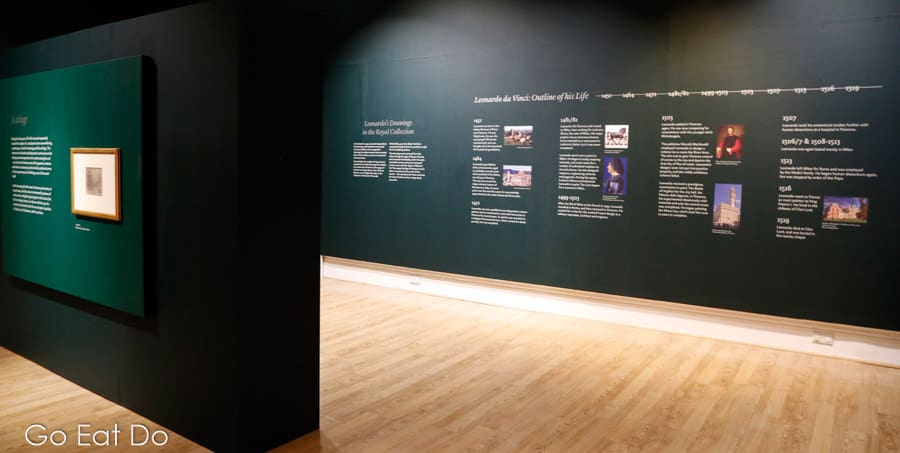
Leonardo da Vinci in Sunderland
“We’ve chosen Sunderland, as well as the 11 regional venues, because we are trying to hit the major metropolitan areas in the UK. We’ve tried to make sure we reach the maximum amount of people,” said Hannah Belcher. Ms Belcher is the Royal Collection Trust’s Senior Exhibitions Project Co-ordinator.
“We estimate that once the exhibition has been in London, at the Queen’s Gallery Buckingham Palace, and Edinburgh, at the Palace of Holyroodhouse, that we will have hopefully made it that 34 million people — that’s about just over half the UK population — will be within an hour’s journey of one of these exhibitions. So they were very strategically placed,” added Ms Belcher about the exhibition, which features 144 of Da Vinci’s drawings.
“You don’t want to give anyone the best and most famous pieces. The curator Martin Clayton, our head of prints and drawings, selected each selection of 12 works very carefully. What you should have is a cross-section of Leonardo’s main interests, techniques and everything else,” she added as I talked with her in the first-floor gallery of Sunderland Museum.

Renaissance man and polymath
“So here you’ve got him as a botanist, as an anatomist, as an artist, a painter and a sculptor. You’ve got his designs for a villa, which is architectural,” said Ms Belcher.
Then adding, “You’ve got his military theory interest over there. You’ve got him working in chalk, in pen and in metal point. Every venue has that kind of cross-section so they can see the most of Leonardo.”
Preparing the exhibition involved two years of intensive work. Inevitably, that allowed Ms Belcher to learn a lot about the life of the artist, who was born the illegitimate son of a notary and a peasant woman in 1452 in the Tuscan village of Vinci.
Leonardo grew up with his grandfather and showed a talent for art. It’s interesting to reflect that if he’d been born legitimately Leonardo may have been encouraged to follow his father’s profession, thus becoming a notary. Instead, he was allowed to become an apprentice in the Florence workshop of Andrea del Verrochio, a painter, sculptor, goldsmith and draughtsman.
Leonardo da Vinci’s designs
Though he’s now known primarily as an artist, Da Vinci’s notebooks hold designs for armoured cars, bridges and flying machines. So what aspect of Da Vinci’s life most surprised the coordinator of this exhibition?
“I think probably to do with his anatomy and scientific discovery. If he’d printed his treatise he would probably be known as the greatest Renaissance anatomist. He discovered things that weren’t proven until the 1980s, which is extraordinary for the time and the conditions he was working in,” answered Ms Belcher.
The works exhibited in Sunderland include a detailed study of lungs, probably those of a pig. A study of a bladder and lower leg and foot of a human are also displayed. So too are studies of optics.
The works displayed on Wearside also encompass the portrait of a woman, a map of western Tuscany and mortars firing into a fortress.
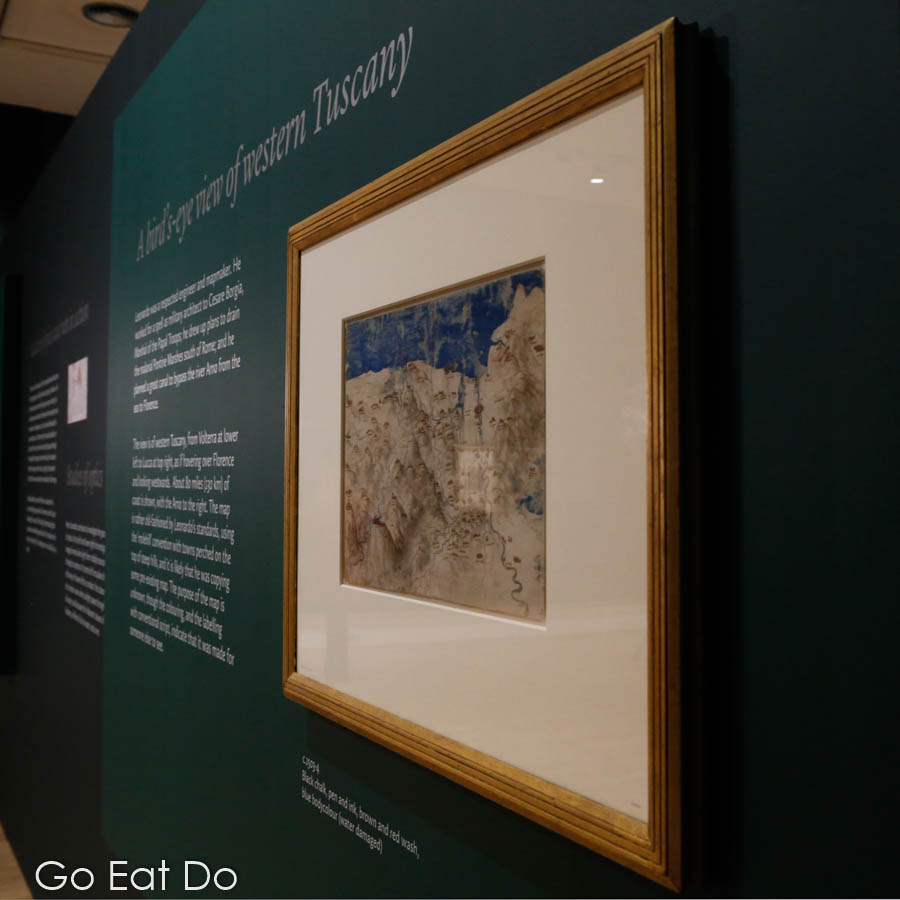
An exhibition with 12 venues
For Sunderland to be chosen as one of the 12 venues to exhibit Leonardo da Vinci: A Life in Drawing reflects well on the city.
“We’ve been working for the last few years really to put Sunderland back at the heart of the UK in terms of arts and culture. We know it’s an incredibly creative city. And we know the people are incredibly creative through what we’ve been able to do with the Tall Ships last year. We were involved with Danny Boyle’s commission Pages of the Sea,” said Keith Merrin, the Chief Executive of Sunderland Culture, which manages cultural venues in the city.
“We’ve been bringing major national events to Sunderland and really to bring probably the greatest artist in the world, certainly one of the most famous artists in the world, to Sunderland is an amazing step on that journey. So it’s an incredibly proud moment for the city as we’ve been chosen as one of only 12 cities across the UK to be hosting the Leonardo exhibition,” added the executive.
Leonardo da Vinci: A Life in Drawing
Artworks from Sunderland Museum’s collection are being displayed alongside Renaissance works during the Leonardo da Vinci: A Life in Drawing exhibition.
Additionally, the neighbouring first-floor gallery at Sunderland Museum is hosting What Would Leonardo Make Today? The exhibition opens up a debate about what the Renaissance man would have focused on if he had been alive in the 21st century.
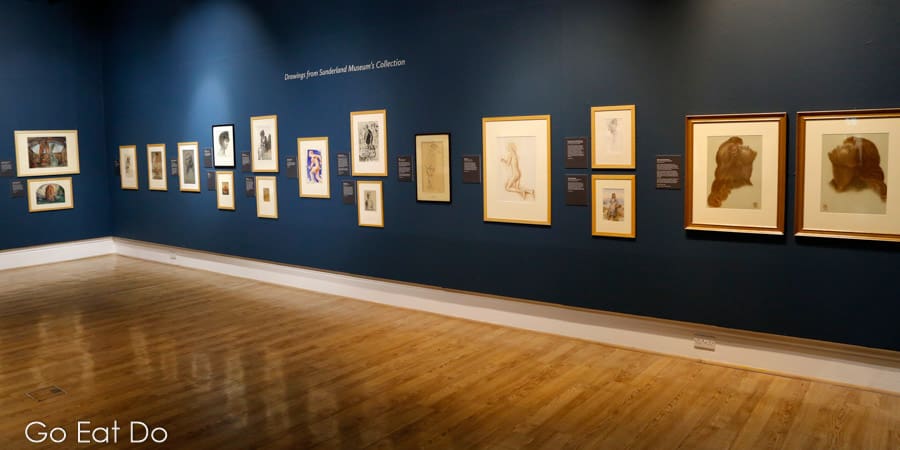
One Day You’ll Be Older Too
Simultaneously, artist Andrew Tift is exhibiting works from his series One Day You’ll Be Older Too.
“There was a film that I saw a long time ago, called Fried Green Tomatoes at the Whistle Stop Cafe, which was a film that I really liked. It’s not a classic film or anything, but he kind of wrung a little tune with me. I thought that’s great: A lady went into the care homes and chatted to people and bought out their memories and stories, and the wisdom and the knowledge of the people and continued their story to the sort into the modern day,” explained the artist.
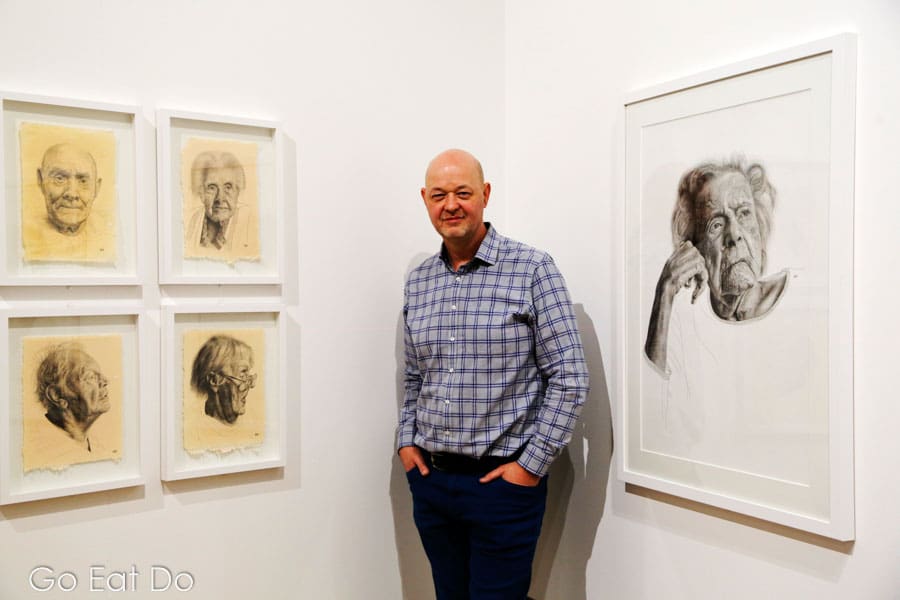
British artist Andrew Tift
“So I thought I’d like to go into care homes and make some portraits of the residents there and see them as individuals. I made them quite poignant portraits with kind of humanity to them, which is kind of what I always aim for, and see them very much as individuals,” added the man whose relationship with Sunderland goes back to the mid-1990s.
“I did a project through the National Portrait Gallery and BP, and did a series of portraits of the Nissan car workers and old shipbuilders, who I met in the working mens’ clubs in Southwick. The show of portraits went to the Nissan works in Tokyo. Then was it was shown at the National Portrait Gallery,” he explained as we talked in front of his latest pieces.
“What I do is I go into the care home and sit down and chat with them. So it’s conversation based to start and then I do quick drawings in charcoal. Just to get used to the face and ease into conversation. Then I start taking photographs. I set up a white screen behind them. And then I take the photographs. Then I’ll go back to my studio, edit the photographs and use a combination of the drawings and the photographs to make these final the final pieces,” added the British artist.
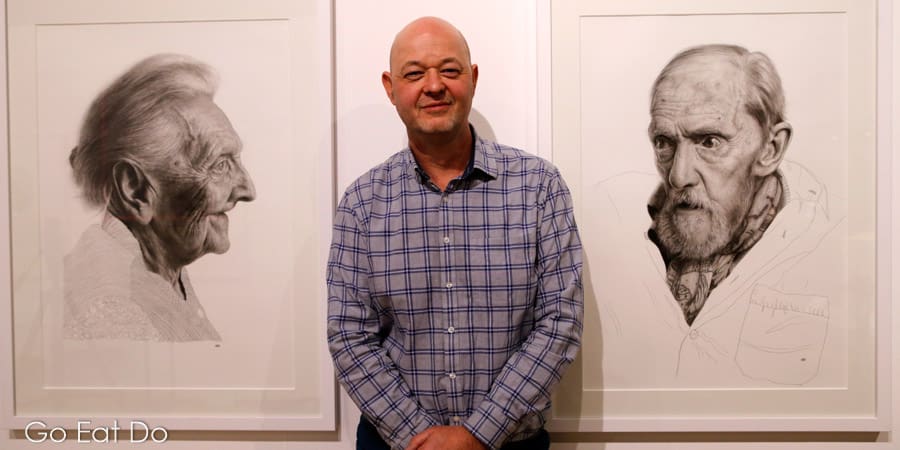
One of the world’s geniuses
“The main thing is that I tried to do almost nothing to relate to Da Vinci’s work – you can’t compete. Leonardo da Vinci, as you know, is one of the world’s geniuses, so you almost have to walk away from what he’s done and just do your own thing. I made a conscious effort just to make work that was my work, and not Leonardo’s work. There are occasional little echoes. There’s one of his profile portraits in the exhibition and I’ve done a couple of portraits of a lady to echo that,” he explained.
Leonardo da Vinci: A Life in Drawing was shown at venues across the United Kingdom until 6 May 2019.
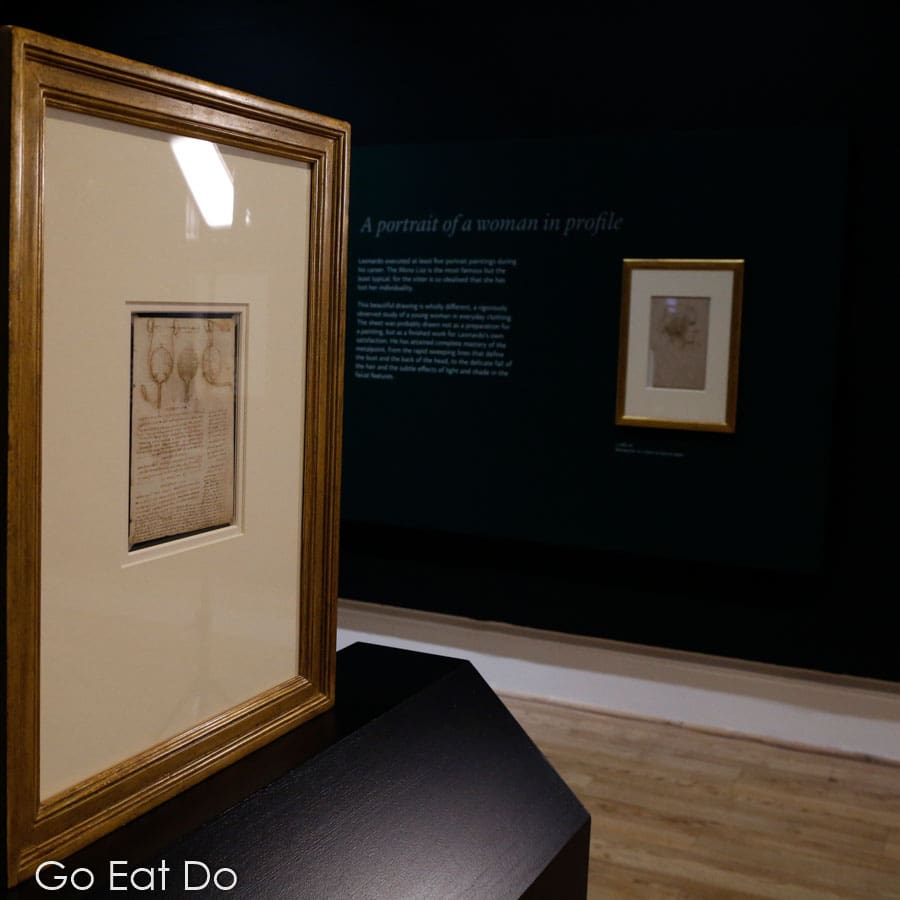
Further information
See the Sunderland Culture website for information about exhibitions and events. The See It Do It Sunderland website also has information about things to do on Wearside.
Stuart Forster, the author of this post, is an award-winning travel and food writer from North East England.
Thank you for visiting Go Eat Do and reading this post about the exhibition of artworks by Leonardo da Vinci in Sunderland. If you are planning on visiting the city, please take a look at the post about things to do in Sunderland.
If you liked this post why not sign up for the free Go Eat Do newsletter? It’s a hassle-free way of getting links to posts.
‘Like’ the Go Eat Do Facebook page to see more photos and content.




